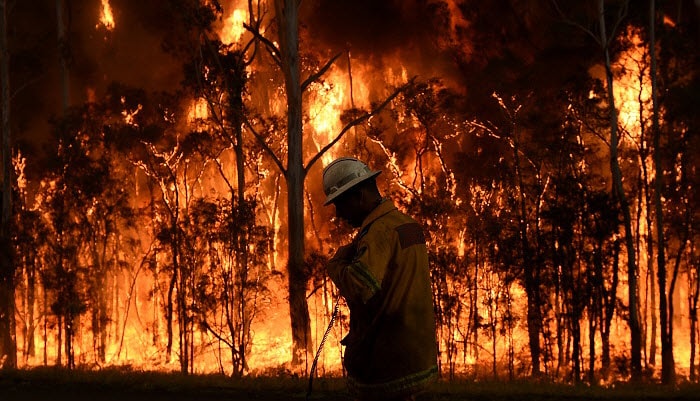Comprehending the Significance of an Extensive BAL Assessment Report
Wiki Article
Important Tips for Bushfire Administration to Make Sure Fire Defense

Understanding Bushfire Threat Degrees
Recognizing the differing levels of bushfire threat is essential for efficient preparation and prep work in mitigating prospective hazards to properties and lives. Bushfire threat degrees are commonly classified based upon elements such as climate condition, gas schedule, topography, and historical fire behavior. By comprehending these danger communities, levels and people can proactively execute methods to decrease susceptability and enhance strength when faced with prospective bushfire events.The initial degree of bushfire threat is low threat, where the likelihood of a bushfire occurring and triggering substantial damage is very little. High-risk degrees signify a significant threat, with problems helpful to quick fire spread and extreme fire habits.
Comprehending these bushfire risk degrees makes it possible for stakeholders to tailor their preparedness and response actions appropriately, ensuring a reliable and proactive approach to bushfire monitoring.
Establishing a Defensible Area
Effective bushfire administration starts with establishing a defensible area around homes to boost security against potential fire risks. A defensible space is a buffer area that develops an obstacle between a framework and the surrounding combustible vegetation. This area works as a crucial line of defense, offering firemans a safe location to run and assisting to lower the risk of a fire infecting the residential or commercial property.When developing a defensible room, it is necessary to think about the format of the home and the surrounding landscape. Clearing greenery, especially highly combustible plants, within a certain radius of the home can help protect against the rapid spread of fires. Additionally, keeping a well-irrigated area around the property can additionally improve its defensibility.
Normal upkeep of the defensible space is essential to ensure its performance. This includes cutting overhanging branches, getting rid of dead greenery, and maintaining the area devoid of debris. By investing time and initiative into creating and keeping a defensible space, homeowner can significantly boost their possibilities of shielding their homes and possessions throughout a bushfire.
Applying Fire-Resistant Landscaping
When creating landscapes to reduce the danger of bushfires, integrating fire-resistant components is necessary for boosting property protection and lowering fire hazards. Executing fireproof landscape design includes strategic planning to develop a defensible space around structures. Start by choosing fireproof plant species that are less likely to spark and generate reduced degrees of combustible materials. Select plants with high moisture material, reduced oil web content, and marginal dead vegetation to reduce the risk of fire spread. Furthermore, keep appropriate spacing in between plants and keep them appropriately pruned to stop fire from quickly leaping between plant life.
Developing an Emergency Situation Discharge Plan
Establishing an extensive emergency situation evacuation plan is vital for making sure the security and well-being of people throughout possible bushfire incidents (BMP). An efficient emptying strategy must detail clear procedures to adhere to in case of a bushfire hazard, consisting of marked emptying routes, assembly factors, and communication methodsTo start creating an emergency discharge strategy, it is important to analyze the certain dangers and susceptabilities of your place. Identify multiple evacuation courses that bring visit site about secure locations far from the fire, thinking about elements such as surface, roadway access, and prospective dangers. Establish interaction channels to sharp homeowners of an upcoming evacuation, using approaches such as sirens, message signals, or door-to-door alerts.
Consistently testimonial and practice the evacuation plan with all homeowners or neighborhood members to make sure everybody recognizes their roles and obligations. Conduct drills to test the efficiency of the strategy and make any essential changes. By having a well-prepared emptying strategy in location, you can boost the possibilities of a secure and orderly emptying during a bushfire emergency.
Preserving Fire Safety Equipment
After developing a thorough emergency emptying plan for bushfire cases, it is important to focus on the normal maintenance of fire safety equipment to guarantee optimum capability and readiness. Regular maintenance of fire security devices such as fire extinguishers, smoke detectors, emergency alarm, and lawn sprinkler systems is vital in securing lives and property during a bushfire. Performing routine evaluations, testing, and servicing of these click here for info tools by certified professionals is necessary to ensure they remain in working order when required.Fire extinguishers ought to be examined frequently for pressure levels, visible damage, and correct capability. By diligently preserving fire security equipment, people can boost their readiness and action abilities in the occasion of a bushfire.
Final Thought
In final thought, effective bushfire administration entails comprehending risk levels, producing defensible rooms, executing fireproof landscaping, establishing emptying plans, and preserving fire safety equipment. By following these essential pointers, individuals can ensure far better fire security and safety for their buildings and communities. It is necessary to prioritize positive steps to alleviate the risks connected with bushfires and to be gotten ready for emergency situations.By comprehending the nuances of bushfire threat degrees, developing defensible spaces, implementing fire-resistant landscaping, creating detailed discharge plans, and making certain the maintenance of fire safety and security tools, individuals and areas can substantially strengthen their strength against the ravages of wildfires - Bushfire Management Plan. These suggestions are not only important for safeguarding versus instant fire risks yet likewise for fostering lasting fire security strategies that can make a substantial distinction in the face of escalating bushfire dangers
High-risk degrees represent a significant risk, with problems helpful to quick fire spread and severe fire actions. Normal maintenance of fire safety and security tools such as fire extinguishers, smoke detectors, fire alarm systems, and lawn sprinkler systems is crucial in guarding lives and residential property throughout a bushfire.In verdict, reliable bushfire administration entails comprehending danger levels, creating defensible rooms, executing fireproof landscaping, establishing emptying strategies, and maintaining fire safety and security devices.
Report this wiki page